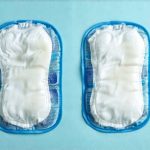Bladder leaks, often referred to as urinary incontinence, are a surprisingly common experience affecting millions of women worldwide. It’s a topic shrouded in silence for many, leading to feelings of embarrassment and isolation. However, it’s crucial to understand that bladder leaks aren’t a sign of personal failure; they’re a physiological condition with various causes and levels of severity. From the occasional dribble during a laugh (stress incontinence) to a sudden, urgent need to go (urge incontinence), there are solutions available to manage symptoms and improve quality of life. Choosing the right absorbent product – specifically, the right pad – is often the first step towards regaining confidence and control.
This isn’t about accepting limitations; it’s about finding tools that empower you to live fully. The market offers a vast array of pads designed for bladder leaks, ranging from light liners to heavy-duty overnight options. Navigating this selection can feel overwhelming, but understanding the different types, absorbency levels, and features will help you find the best fit for your individual needs. It’s important to remember that what works well for one person may not be ideal for another, so experimentation and a little self-awareness are key. This article aims to demystify the options available and provide guidance on selecting the most appropriate pad for your situation, helping you feel comfortable, confident, and in control.
Understanding Pad Options
The world of bladder leak pads is far more complex than just “light” or “heavy.” Manufacturers have developed a wide range of products catering to different needs and lifestyles. It’s essential to understand the core differences between these options to make an informed choice. One primary distinction lies in absorbency levels, typically categorized as light, moderate, maximum, and overnight. Light absorbency pads are suitable for occasional dribbles or small leaks, offering discreet protection for everyday activities. Moderate absorbency provides greater coverage for more frequent or slightly heavier leaks. Maximum absorbency is designed for significant leakage, while overnight pads offer the highest level of protection for nighttime use, often featuring extended back and side wings for enhanced security.
Beyond absorbency, pad construction plays a crucial role in comfort and effectiveness. Many modern pads utilize super-absorbent polymers (SAPs) which can soak up significantly more liquid than traditional materials like cotton or fluff pulp. These SAPs lock away moisture, helping to keep skin dry and minimize odor. Some pads also incorporate odor control technology, utilizing activated charcoal or other neutralizing agents. Another important consideration is the pad’s shape and design. Options range from classic rectangular shapes to contoured designs that offer a more comfortable and secure fit. Discreet liners are often preferred for light incontinence as they resemble regular panty liners and can be worn with confidence.
Finally, consider whether you prefer pads with adhesive strips or those designed to be used with special underwear. Adhesive strips provide a secure hold within your own underwear, while dedicated absorbent underwear offers an all-in-one solution that feels more like regular undergarments. The best choice depends on your personal preference and level of activity. Choosing the right pad isn’t just about absorbency; it’s about finding a product that integrates seamlessly into your daily life.
Factors to Consider When Choosing
Selecting the ideal bladder leak pad requires careful consideration of several factors beyond just the level of incontinence you experience. Firstly, lifestyle plays a significant role. If you lead an active lifestyle, engaging in physical activities or exercise regularly, you’ll need a pad that offers secure fit and reliable protection even during movement. Look for pads with strong adhesive strips or consider using absorbent underwear designed specifically for activity. Secondly, the type of leakage you experience impacts your choice. Stress incontinence, triggered by physical exertion, often requires different features than urge incontinence, which is characterized by sudden, urgent needs to urinate.
- For stress incontinence: Focus on pads with a contoured shape and strong adhesive backing.
- For urge incontinence: Consider pads with higher absorbency levels to accommodate larger volumes of leakage.
Thirdly, skin sensitivity should be taken into account. If you have sensitive skin, look for hypoallergenic pads made from breathable materials to minimize irritation. Avoid pads containing harsh chemicals or fragrances. Prioritizing comfort and preventing skin breakdown are essential for maintaining overall well-being. It’s also important to consider the frequency of pad changes. Regularly changing your pad – even if it doesn’t feel full – helps prevent odor, maintains hygiene, and protects your skin from prolonged exposure to moisture. If you suspect a UTI or have recurring issues, reviewing best practices may be helpful.
Assessing Your Leakage Level
Accurately assessing your leakage level is the foundation for selecting the right pad. This isn’t about guessing; it requires a bit of honest self-observation. A good starting point is to track how frequently you experience leaks throughout the day and the amount of liquid involved. Keep a diary for a few days, noting when leaks occur (during coughing, sneezing, exercise, etc.), and estimate the volume of leakage as light, moderate, or heavy. This information will help you narrow down your options and choose a pad with appropriate absorbency.
Another helpful technique is to perform a “voiding test.” After emptying your bladder, engage in activities that typically trigger leaks (e.g., coughing, jumping jacks). Observe the amount of leakage and adjust your pad choice accordingly. Don’t be afraid to experiment with different absorbency levels until you find one that provides adequate protection without feeling bulky or uncomfortable. Remember, it’s better to overestimate slightly than underestimate. Using a pad that isn’t absorbent enough can lead to embarrassing accidents and skin irritation. Consider incorporating safe exercises into your routine for added support.
Finally, consider consulting with your healthcare provider. They can help assess the underlying cause of your bladder leaks and recommend appropriate treatment options, as well as provide guidance on selecting the best absorbent products for your specific needs. Don’t hesitate to seek professional advice – it’s a sign of taking control of your health and well-being.
Beyond Pads: Complementary Strategies
While pads are an essential tool for managing bladder leaks, they are just one piece of the puzzle. Several complementary strategies can help improve bladder control and reduce leakage frequency. Pelvic floor exercises, also known as Kegels, strengthen the muscles that support your bladder and urethra, helping to prevent leaks. Consistency is key – aim for regular sessions throughout the day.
- Lifestyle modifications:
- Limit caffeine and alcohol intake, as these can irritate the bladder.
- Maintain a healthy weight, as excess weight puts pressure on the bladder.
- Stay hydrated by drinking plenty of water.
- Avoid constipation, which can strain the pelvic floor muscles.
Another valuable technique is bladder training, which involves gradually increasing the time between bathroom visits to help improve bladder capacity and control. This requires discipline and consistency, but it can significantly reduce urgency and frequency. Combining pads with these proactive strategies offers a holistic approach to managing bladder leaks. Finally, don’t underestimate the power of support. Talking to friends, family, or a healthcare professional about your concerns can alleviate feelings of embarrassment and isolation. There are also numerous online communities and support groups where you can connect with others who understand what you’re going through. To further enhance your wellbeing, look at best daily habits to incorporate into your routine. Remember that a healthy lifestyle is beneficial for overall bladder health and can complement other treatment strategies. You might also consider looking into best supplements if you are prone to UTIs.





















